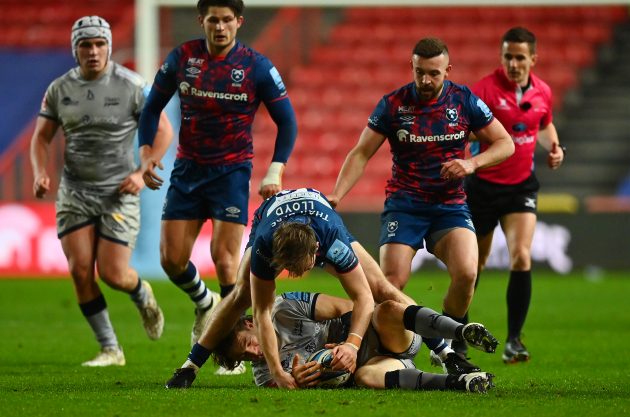It's a key way to win a defensive turnover but is it too dangerous?
Scotland legends Gregor Townsend and Ian McGeechan are both on team ‘ban the jackal’ but there are plenty of back-rowers who are understandably reticent to lose their bread and butter turnovers.
Ireland international and Leinster No 7 Will Connors argues the case for keeping the jackal against Progressive Rugby’s John Fairclough.
Read more: Rugby Fixtures
JOHN FAIRCLOUGH
Ban the jackal? YES, says the professor and surgeon with Progressive Rugby
🧵Why bundee-gate is further evidence that the jackal (regrettably) has to be consigned to the past.
It’s fair to say the Bundee Aki incident has caused quite a stir. In part due to the ferocity of the clear out and his….1/11
— Progressive Rugby (@ProgressiveRug) September 29, 2022
The jackler is undoubtedly brave and highly skilful but the ‘sitting duck’ position is extremely vulnerable, offering the head, neck and shoulders as contact areas. And the alternative option, to roll a player out of the contact area, carries a significant risk of lower-limb injuries.
When you’re getting over the ball with hips at 90 degrees, you are picking up the ball and, in reality, you’re using the ball as support and it leaves your head vulnerable – you can’t protect yourself.
You are theoretically looking at the ball which means anything outside about 120 degrees of vision you can’t see coming. You have seen the injuries caused by people being hit in the jackal position – it is an at-risk position.
We have the situation where it’s not being refereed correctly because there is a wish to get the ball in play in the elite game. It is an irrational position to put the body in, at risk. If it was refereed correctly, the tackled player would need to release the ball immediately: they don’t. And so players supporting the tackled player must bind on and stay on their feet to ‘clear’ the jackler: they don’t.
Whenever you have an event which is producing serious injury, you have to say that event should be removed. With schoolchildren, and the disparity in maturity, it is dangerous and should be dispensed with. At that age they should be using the ball, not fighting on the floor in the jackal – it will not be long before parents vote with their feet.
WILL CONNORS
Ban the jackal? NO, says the Leinster and Ireland flanker

Will Connors runs in a try for Ireland (INPHO)
It’s a bit of a dark art. You know you’re going to get a bit of impact, hopefully a legal impact, but there is a lot of skill to it. I see the concern around the fact you do have exposed knees and head but referees are starting to get rid of things like the neck roll.
I have had a number of knee injuries and I still feel comfortable doing it. As crazy as it may look when you are going in on the ball – from a spectator’s point of view – you are in quite a strong position and you work a lot on it to survive the impact and not expose yourself too much.
Read more: Ireland Six Nations squad
Clearing out is interesting. In under-age rugby they always say ‘break the pane of glass coming in’ but if you’re coming in like that it’s risking a head-on-head contact which we are trying to move away from. It’s a difficult one, the only way to do it is to get down quicker and that needs to be the biggest push. If the poacher is there, reward him and once he is in there and he has any control over the ball it should be blown up. They are moving more towards that.
Now you’re starting to see a lot more that if the ball lifts in any way it’s a penalty and I think they are starting to move in the right direction. In terms of clearing out a poacher, it’s quite dangerous and hard to do and the only way to prevent it is to get there quicker.
Not too long ago people were flying in, out of control. If you’re not in control you are putting both of you at risk.
This debate first appeared in the January 2023 issue of Rugby World.
Download the digital edition of Rugby World straight to your tablet or subscribe to the print edition to get the magazine delivered to your door.
Follow Rugby World on Facebook, Instagram and Twitter.





